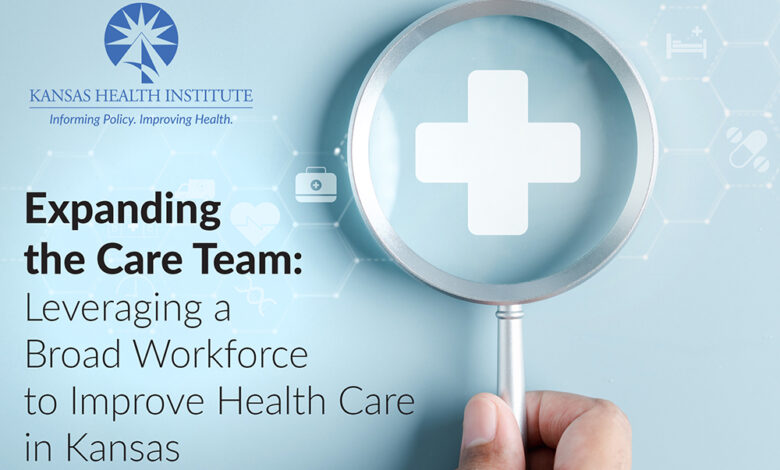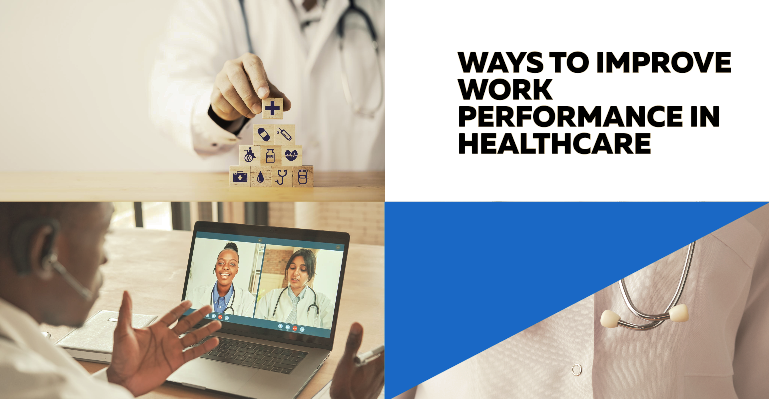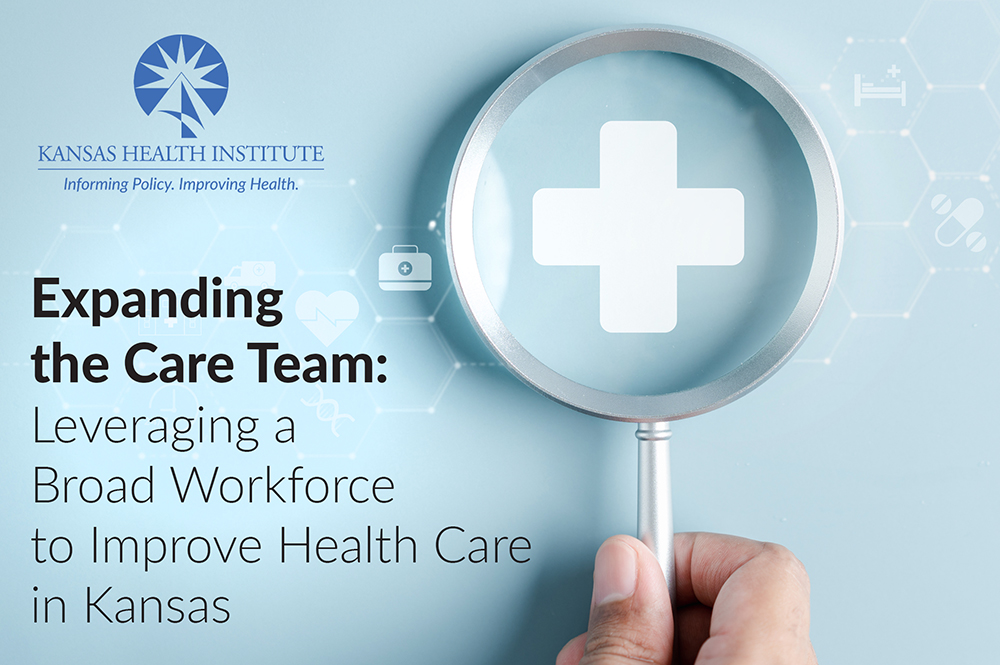
IT in Healthcare A More Efficient, Satisfied Workforce
IT in healthcare enabling a more efficient and satisfied workforce is revolutionizing the industry. We’re moving beyond clunky paper systems and embracing technology that streamlines workflows, reduces burnout, and improves patient care. This isn’t just about implementing new software; it’s about creating a better experience for everyone – from doctors and nurses to patients and administrators. This post dives into the ways technology is transforming healthcare, focusing on the positive impact on both efficiency and job satisfaction.
From electronic health records (EHRs) that instantly share patient information to telehealth appointments that expand access to care, the benefits are undeniable. We’ll explore specific examples, discuss the challenges, and look ahead to the future of healthcare IT, including the exciting potential of AI and machine learning. Get ready to see how technology is shaping a healthier, happier healthcare landscape!
Impact of IT on Healthcare Workforce Efficiency
The integration of information technology (IT) into healthcare has revolutionized how medical professionals work, significantly impacting workforce efficiency and overall patient care. From streamlining administrative tasks to enhancing diagnostic capabilities, IT solutions are reshaping the healthcare landscape, leading to a more productive and satisfied workforce. This section will explore the key ways IT improves efficiency within the healthcare sector.
Electronic Health Records and Workflow Efficiency
Electronic Health Records (EHRs) have dramatically altered the workflow in hospitals, moving away from cumbersome paper-based systems. The transition to digital records has led to significant improvements in speed, accuracy, and cost-effectiveness. The following table illustrates these key differences:
| Feature | Paper-Based System | EHR System |
|---|---|---|
| Speed | Slow; requires manual searching, filing, and retrieval. Information is often fragmented across multiple locations. | Fast; instant access to complete patient history from any authorized location. Information is centralized and easily searchable. |
| Accuracy | Prone to errors due to illegible handwriting, misfiling, and lost records. Version control is difficult. | High accuracy due to automated data entry and reduced human error. Version control is built-in, providing a clear audit trail. |
| Cost | High; significant costs associated with storage, printing, filing, and retrieval of paper records. Increased risk of lost or misplaced files. | Initially high investment cost, but long-term cost savings are realized through reduced administrative overhead, improved efficiency, and reduced errors. |
Telehealth and Expanded Healthcare Reach
Telehealth utilizes technology to deliver healthcare services remotely, expanding the reach of healthcare professionals and improving efficiency. This includes video conferencing for consultations, remote patient monitoring using wearable devices, and online portals for secure messaging and appointment scheduling. For example, a rural hospital utilizing telehealth can connect patients with specialists in larger cities, eliminating the need for lengthy travel and reducing patient wait times.
IT in healthcare is revolutionizing how we work, leading to a more efficient and satisfied workforce. A great example of this is the innovative work being done with AI, like what’s discussed in this insightful article on google cloud healthcare amy waldron generative AI , showcasing how generative AI is streamlining processes. Ultimately, these advancements translate to less administrative burden and more time for patient care, boosting both productivity and job satisfaction across the board.
Similarly, remote patient monitoring allows for proactive intervention, preventing hospital readmissions and reducing the workload on healthcare providers by identifying potential problems early. Telehealth applications like these have significantly improved patient access to care, especially in underserved areas, while simultaneously optimizing the workload of healthcare professionals.
Data Analytics for Operational Efficiency Improvements
Data analytics plays a crucial role in identifying and addressing inefficiencies in healthcare operations. By analyzing large datasets from EHRs, billing systems, and other sources, healthcare organizations can gain valuable insights into operational bottlenecks and areas for improvement.
Actionable strategies derived from data analytics include:
- Optimizing staffing levels based on patient volume and demand fluctuations.
- Improving appointment scheduling algorithms to minimize wait times and no-shows.
- Identifying and addressing delays in the medication dispensing process.
- Streamlining billing processes to reduce administrative costs and improve revenue cycle management.
- Predictive modeling to anticipate potential surges in patient demand and proactively allocate resources.
Streamlining Appointment Scheduling and Patient Management
IT systems significantly streamline appointment scheduling and patient management. The following workflow diagram illustrates this:
Imagine a flowchart. It begins with a patient initiating a request for an appointment (either through an online portal, phone call, or in-person). This request is then routed to the scheduling system, which checks for availability based on provider schedules and patient preferences. The system then confirms the appointment, sends automated reminders to the patient, and updates the patient’s record in the EHR.
Following the appointment, the system generates billing information and updates the patient’s medical records. Finally, the system generates reports on appointment utilization, wait times, and other key metrics, providing data for continuous improvement.
IT’s Role in Enhancing Workforce Satisfaction

Source: ambula.io
Healthcare professionals are often burdened by excessive paperwork and administrative tasks, leading to burnout and decreased job satisfaction. The implementation of appropriate IT solutions can significantly alleviate these pressures, fostering a more positive and productive work environment. This section explores how technology contributes to a happier and more engaged healthcare workforce.
Reduced Administrative Burden Through Automation
Many IT solutions directly address the administrative burden weighing down healthcare workers. Electronic health records (EHRs) like Epic and Cerner have largely replaced paper charts, streamlining patient data access and reducing the time spent on manual data entry and filing. Automated appointment scheduling systems minimize scheduling conflicts and no-shows, freeing up valuable staff time. Furthermore, clinical decision support systems (CDSS) embedded within EHRs provide clinicians with real-time guidance and alerts, reducing errors and improving efficiency.
Pharmacy management systems automate prescription refills and medication reconciliation, reducing the risk of medication errors and improving patient safety while also saving pharmacists significant time. These are just a few examples of how software automation minimizes paperwork and frees up healthcare professionals to focus on patient care.
Job Satisfaction Comparison: Traditional vs. Advanced IT Tools, It in healthcare enabling a more efficient and satisfied workforce
A comparison of job satisfaction levels between healthcare professionals using advanced IT tools and those relying on traditional methods reveals a significant difference. While precise figures vary depending on the specific study and setting, consistent trends emerge. A hypothetical bar chart could illustrate this: (Imagine a bar chart here. The x-axis would label “Traditional Methods” and “Advanced IT Tools”. The y-axis would represent “Job Satisfaction Score” (e.g., on a scale of 1-10). The bar representing “Advanced IT Tools” would be significantly taller than the bar representing “Traditional Methods”, visually demonstrating higher job satisfaction among those using technology.)For instance, a hypothetical study might show an average job satisfaction score of 6.2 for those using traditional methods compared to 8.5 for those using advanced IT tools, indicating a substantial improvement in job satisfaction through technology adoption.
This improved satisfaction is linked directly to reduced administrative burdens and increased efficiency.
Key IT Features Contributing to Positive Work-Life Balance
Several IT features directly contribute to a better work-life balance for healthcare professionals. These can be categorized as follows:
| IT Feature | Impact on Work-Life Balance |
|---|---|
| Remote Access to EHRs and Patient Data | Enables flexible work arrangements and reduces the need for constant physical presence at the workplace. |
| Improved Communication Tools (e.g., secure messaging, telehealth platforms) | Reduces the need for lengthy phone calls and in-person meetings, freeing up time outside of work hours. |
| Automated Scheduling and Reminders | Reduces administrative burden, allowing for more efficient time management and potentially earlier departure from work. |
| Mobile Device Integration for Task Management | Allows for flexible task completion, minimizing the need for after-hours work. |
Impact of Mobile Health Applications on Communication and Collaboration
Mobile health (mHealth) applications have revolutionized communication and collaboration within healthcare teams. For example, applications like Doximity allow for secure messaging between healthcare professionals, facilitating quick consultations and information sharing. Telehealth platforms like Zoom and Skype for Business enable remote consultations, saving travel time for both patients and providers. These mHealth apps foster better communication and coordination, reducing delays and improving the overall quality of care.
The benefits extend beyond immediate communication; shared patient records and integrated scheduling tools within these platforms further streamline workflows and reduce administrative tasks.
Specific IT Tools and Their Effects

Source: myiqsolutions.com
The integration of technology in healthcare is revolutionizing how medical professionals interact with patients and manage care. This section explores specific IT tools, their functionalities, and their impact on efficiency, patient safety, and workforce satisfaction. We’ll examine how these tools are transforming healthcare delivery, improving outcomes, and enhancing the overall experience for both providers and patients.
Communication and Collaboration Tools
Effective communication is paramount in healthcare. Several IT systems significantly improve the exchange of information between healthcare providers and patients, leading to better coordination of care and improved patient outcomes. Examples include secure messaging platforms integrated within Electronic Health Records (EHRs), telehealth platforms, and patient portals. These systems offer features such as secure messaging, video conferencing, appointment scheduling, and access to medical records, enabling real-time communication and collaboration.
The benefits include reduced wait times, increased patient engagement, improved adherence to treatment plans, and a more efficient workflow for healthcare professionals. For instance, a secure messaging platform allows a physician to quickly consult with a specialist about a patient’s case, accelerating diagnosis and treatment. Telehealth platforms enable remote consultations, extending access to care for patients in rural or underserved areas.
Patient portals empower patients to actively participate in their care by accessing their medical records, scheduling appointments, and communicating directly with their healthcare providers.
IT Systems Improving Patient Safety
IT plays a crucial role in enhancing patient safety by minimizing errors and improving the accuracy of diagnoses and treatment. Several systems contribute to this improvement. Clinical Decision Support Systems (CDSS) provide real-time alerts and recommendations to clinicians, helping them avoid medication errors, identify potential drug interactions, and make informed decisions based on the latest medical evidence. For example, a CDSS might alert a physician to a potential allergy before prescribing a medication.
Barcode Medication Administration (BCMA) systems verify medication administration by scanning both the patient’s identification and the medication barcode, reducing the risk of medication errors. Picture Archiving and Communication Systems (PACS) improve diagnostic accuracy by providing radiologists with high-quality digital images and advanced image analysis tools. The ability to easily share and access these images improves collaboration among specialists, facilitating faster and more accurate diagnoses.
These IT systems collectively contribute to a safer and more reliable healthcare environment, reducing medical errors and improving patient outcomes.
Impact of IT Investments in Training and Support
Investing in comprehensive training and ongoing support is critical for successful technology adoption and workforce satisfaction. Without adequate training, staff may struggle to use new systems effectively, leading to frustration and decreased efficiency. A case study from a large hospital system demonstrated that a structured training program combined with readily available technical support significantly improved staff satisfaction and efficiency.
The program included hands-on training sessions, online tutorials, and readily available technical support staff. Post-training surveys showed a marked increase in staff confidence in using the new EHR system, leading to a reduction in errors and improved workflow. This investment in training not only ensured the successful implementation of the new technology but also fostered a more positive and productive work environment.
Patient Portal Implementation Scenario
A rural clinic faced challenges with patient communication and appointment scheduling. Patients often missed appointments due to scheduling conflicts or lack of communication, leading to delays in care and increased administrative burden. Implementing a patient portal addressed this challenge by providing patients with online access to schedule appointments, request prescription refills, and communicate directly with their healthcare providers.
IT’s role in boosting healthcare efficiency and worker satisfaction is undeniable. We’re seeing major players invest heavily in this area, as evidenced by Walgreens’ recent move, check out this news on walgreens raises healthcare segment outlook summit acquisition , which shows a strong belief in the sector’s growth. This kind of investment further underscores how vital technology is to creating a more productive and happier healthcare workforce.
This solution improved communication, reduced missed appointments, and freed up staff time for direct patient care. The portal’s user-friendly interface ensured easy adoption by both patients and staff, leading to increased patient satisfaction and improved clinic efficiency. The clinic saw a significant reduction in no-shows after implementing the portal, improving patient care and resource allocation.
Challenges and Future Trends in Healthcare IT: It In Healthcare Enabling A More Efficient And Satisfied Workforce

Source: khi.org
The integration of IT into healthcare, while transformative, presents significant hurdles for organizations. Successfully navigating these challenges is crucial for maximizing the benefits of technology and creating a more efficient and satisfied workforce. The following sections explore the key obstacles, future advancements, and ethical considerations surrounding healthcare IT.
Healthcare IT Implementation Challenges
Implementing and maintaining effective IT systems in healthcare is fraught with complexities. These challenges significantly impact both workforce efficiency and job satisfaction. The table below Artikels some key issues, potential solutions, and their consequences.
IT in healthcare is all about boosting efficiency and job satisfaction, right? But sometimes, the system falls short, as highlighted by the recent new york state nurse strike NYSNA Montefiore Mount Sinai , where overworked nurses fought for better conditions. This underscores the need for truly effective IT solutions that address staffing shortages and improve the overall work environment, leading to a more satisfied and productive healthcare workforce.
| Challenge | Potential Solutions | Impact on Workforce Efficiency & Satisfaction |
|---|---|---|
| High initial investment costs and ongoing maintenance expenses | Strategic budgeting, phased implementation, cloud-based solutions, vendor partnerships, exploring government grants or subsidies. | Reduced efficiency due to financial constraints; decreased satisfaction due to resource limitations and potential job insecurity. |
| Interoperability issues between different systems | Adoption of standardized data formats (e.g., FHIR), integration platforms, robust API management. | Improved efficiency through seamless data flow; increased satisfaction through reduced administrative burden and streamlined workflows. |
| Data security and privacy concerns | Robust cybersecurity measures, employee training, data encryption, compliance with HIPAA and other regulations. | Increased efficiency through secure data management; improved satisfaction through enhanced trust and reduced risk of breaches. |
| Resistance to change among healthcare professionals | Comprehensive training programs, effective communication strategies, demonstrating clear benefits of new systems, engaging staff in the implementation process. | Improved efficiency through proficient use of new technologies; enhanced satisfaction through increased confidence and reduced frustration. |
| Shortage of skilled IT professionals | Investing in training and development programs, partnerships with educational institutions, competitive salaries and benefits packages. | Reduced efficiency due to understaffing; decreased satisfaction due to increased workload and stress on existing IT personnel. |
The Role of AI and Machine Learning
Artificial intelligence (AI) and machine learning (ML) are poised to revolutionize healthcare. Their applications promise significant improvements in workforce efficiency and job satisfaction by automating tasks, providing insights, and enhancing decision-making.AI and ML can automate administrative tasks such as appointment scheduling, billing, and medical record keeping, freeing up healthcare professionals to focus on patient care. ML algorithms can analyze large datasets to identify patterns and predict patient outcomes, enabling proactive interventions and improving the quality of care.
For example, AI-powered diagnostic tools can assist radiologists in detecting anomalies, reducing workload and improving accuracy. This leads to increased efficiency for the radiologists and potentially improved patient outcomes, resulting in greater job satisfaction. Further, predictive analytics can optimize staffing levels, reducing burnout and improving overall workforce satisfaction.
Ethical Considerations in Healthcare IT
The use of IT in healthcare raises important ethical considerations that must be carefully addressed.
The ethical implications of implementing IT solutions in healthcare are significant. Careful consideration must be given to:
- Data privacy: Ensuring patient data is protected from unauthorized access and use, adhering to strict privacy regulations.
- Data security: Implementing robust security measures to prevent data breaches and protect sensitive information.
- Patient autonomy: Respecting patient rights to access, control, and manage their own health information.
- Algorithmic bias: Mitigating potential biases in AI algorithms that could lead to unfair or discriminatory outcomes.
- Transparency and accountability: Ensuring transparency in the use of AI and ML systems and establishing clear accountability for their outcomes.
Future Trends in Healthcare IT
Several trends are shaping the future of healthcare IT, significantly impacting the workforce. The following timeline illustrates some key developments and their anticipated impact.
| Timeline | Trend | Impact on Workforce |
|---|---|---|
| 2024-2026 | Increased adoption of cloud-based solutions | Improved accessibility to data and applications, enhanced collaboration, reduced IT infrastructure costs, potentially leading to job displacement in some areas but creation of new roles in cloud management. |
| 2027-2029 | Widespread implementation of AI and ML | Automation of routine tasks, improved diagnostic accuracy, personalized medicine, increased efficiency, potential job displacement in some areas, but creation of new roles in AI development and maintenance. This is similar to the impact of automation in other industries. For example, the introduction of automated teller machines (ATMs) initially led to concerns about job losses for bank tellers, but ultimately led to a shift in roles and responsibilities, with tellers focusing more on customer service and complex transactions. |
| 2030 and beyond | Integration of wearable technology and remote patient monitoring | Enhanced patient engagement, proactive care management, reduced hospital readmissions, increased efficiency in managing chronic conditions, creation of new roles in remote patient monitoring and data analysis. This mirrors the evolution of telehealth, where the initial concerns about reduced in-person patient interaction have been offset by the increased accessibility and convenience of remote consultations, leading to new opportunities for healthcare professionals. |
Outcome Summary
Ultimately, the integration of IT in healthcare isn’t just about technological advancement; it’s about human empowerment. By streamlining processes, reducing administrative burdens, and fostering better communication, technology is freeing up healthcare professionals to focus on what truly matters: providing exceptional patient care. The journey towards a more efficient and satisfied workforce is ongoing, but the progress we’ve seen so far is incredibly promising.
The future of healthcare is bright, powered by innovation and a commitment to improving the lives of both caregivers and patients.
FAQ Insights
What are the biggest challenges in implementing healthcare IT?
Cost, integration with existing systems, data security concerns, and staff training are major hurdles. Overcoming these requires careful planning, robust security measures, and ongoing staff support.
How does IT improve patient safety?
IT systems like clinical decision support systems and barcode medication administration reduce medication errors. Improved diagnostic accuracy through imaging analysis and electronic record-keeping also contribute to enhanced safety.
Will AI replace healthcare professionals?
No. AI will augment, not replace, healthcare workers. It will automate tasks, analyze data, and provide insights, allowing professionals to focus on complex patient needs and human interaction.
What about data privacy concerns with increased IT use?
Data privacy is paramount. Strict adherence to HIPAA regulations and robust cybersecurity measures are crucial to protect patient information and maintain trust.





